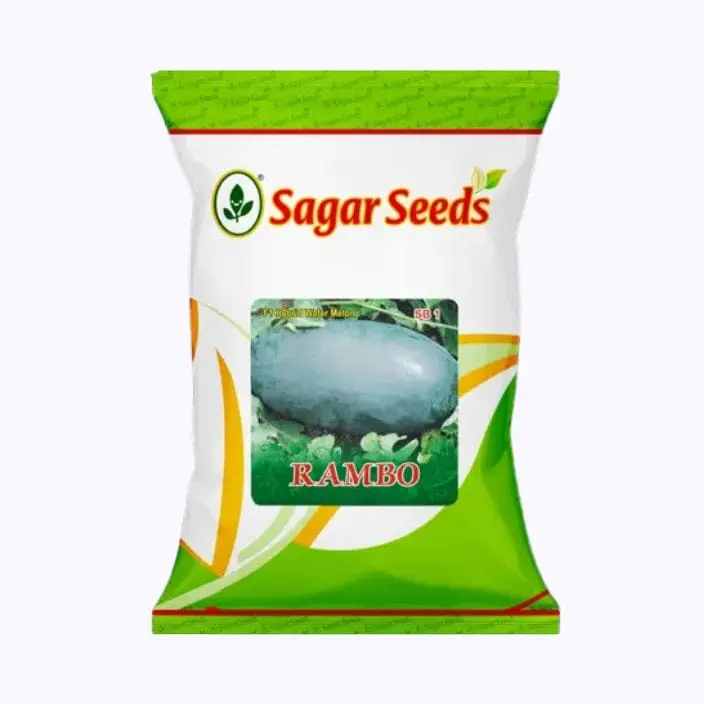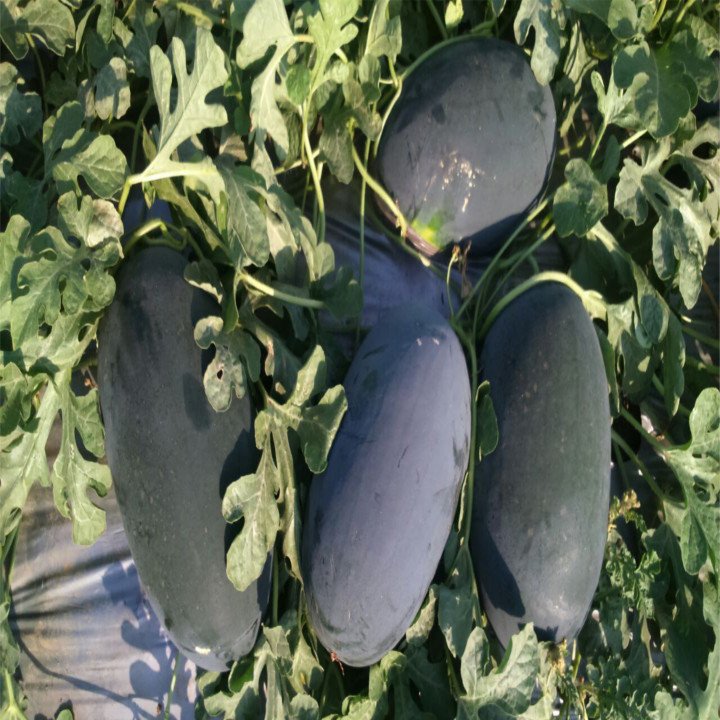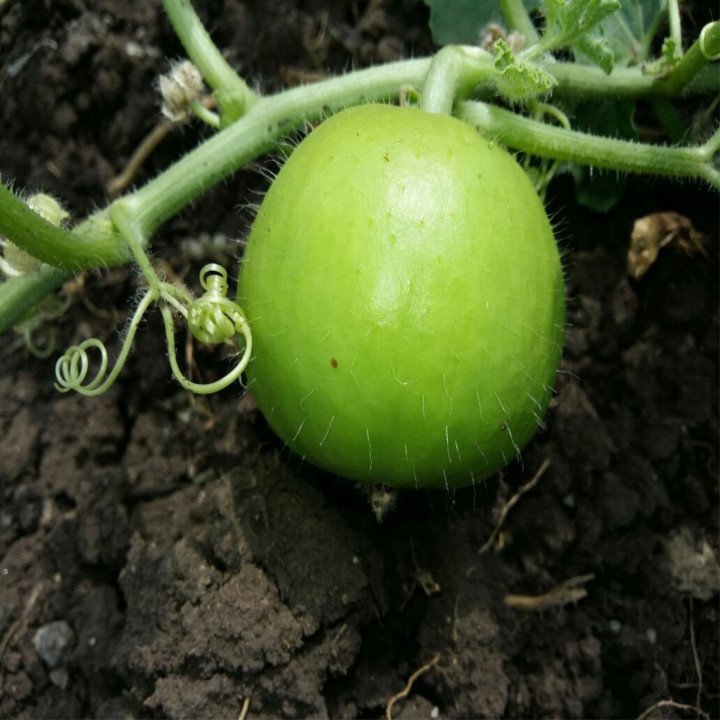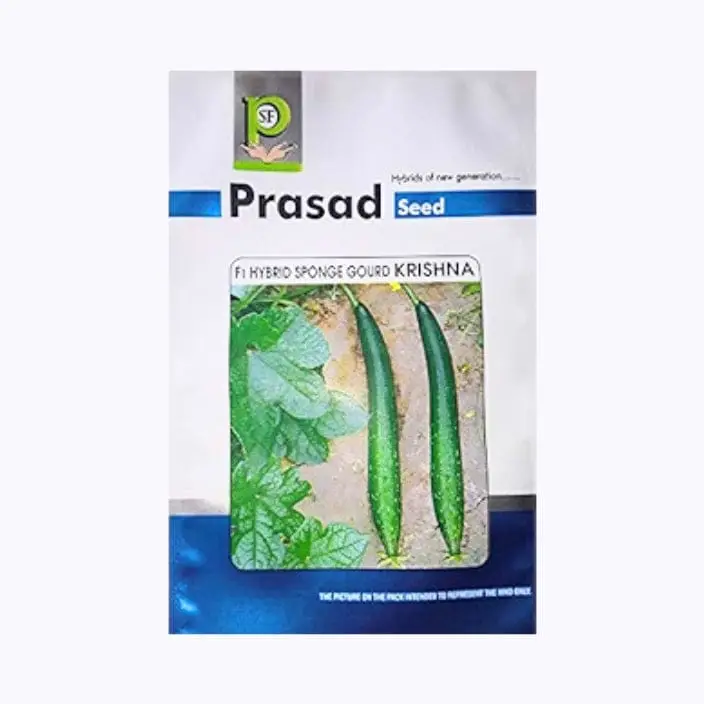Sagar Rambo/Romeo F1 Watermelon Seeds – High-Yield Hybrid for Sweet, Juicy Fruits
Sagar Rambo/Romeo F1 Watermelon is a premium hybrid developed for dependable yield, attractive uniform fruits, and standout eating quality. Growers appreciate its dark green striped rind and bright red flesh that stays firm and sweet from field to market. With strong field adaptability and breeding for resilience against common stresses, this hybrid fits both commercial programs and serious home growers who want consistent performance across diverse soils and climates.
Product Specifications
| Brand |
Sagar |
| Variety |
Rambo/Romeo F1 Watermelon |
| Fruit Shape |
Oval, uniform |
| Fruit Color |
Dark green rind with contrasting stripes |
| Flesh Color |
Bright red |
| Average Fruit Weight |
8–10 kg (under recommended management) |
| Maturity Period |
75–85 days (from sowing to first pick varies by season) |
| Yield |
High (program- and season-dependent) |
| Cultivation Type |
Open field |
| Disease Resistance |
Bred for tolerance to common watermelon diseases (follow local IPM) |
| Packaging Size |
50 g |
Key Features
- Vibrant red flesh: Juicy, sweet, and appealing for fresh consumption.
- High-yield hybrid: Consistent fruit set and productivity with good management.
- Uniformity for the market: Oval fruits with even sizing for attractive pack-outs.
- Field resilience: Bred to handle common field pressures when paired with sound agronomy.
- Broad adaptability: Performs across varied soils and climatic zones.
- Shelf appeal: Striped dark-green rind enhances display and consumer preference.
Grower Benefits
- Superior taste experience: Sweet, refreshing flavor that drives repeat purchase.
- Marketable quality: Reliable size and firmness support better transport and shelf life.
- Operational efficiency: Hybrid vigor and tolerance reduce management intensity versus sensitive types.
- Demand-ready look: Eye-catching stripes and uniform shape suit retail and bulk channels.
Sowing & Crop Management (Experience-Based Guidance)
- Climate & soil: Warm-season crop; choose well-drained sandy loam to loam with good organic matter and neutral to slightly alkaline pH. Avoid waterlogging.
- Bed & spacing: Raised beds or ridges for drainage. Common spacings for oval types: row 1.8–2.4 m; plant 0.6–0.9 m (adjust to vine vigor and season).
- Sowing method: Direct seeding at 2–3 cm depth, 2 seeds per hill; thin to the strongest seedling. Transplanting is possible with sturdy plugs.
- Nutrition: Base-apply well-balanced N-P-K with secondary nutrients and micronutrients; split nitrogen through early vine growth, flowering, and fruit set. Use soil and tissue tests to fine-tune.
- Irrigation: Keep uniform moisture from establishment to fruit set. Reduce irrigation as fruits near physiological maturity to protect sweetness and rind integrity.
- Canopy & fruit load: Manage vine spread and retain a balanced fruit load per plant for target sizing (8–10 kg class).
- IPM: Scout routinely; integrate crop rotation, mulching, and labeled crop protection as per local guidance.
- Harvest cues: Dried tendril near the fruit peduncle, creamy ground spot, and duller rind sheen are common indicators; verify with field checks.
Practical Notes
- For early windows or cooler nights, plastic mulch or low tunnels can improve establishment and earliness.
- Calcium and potassium nutrition support firmness and transport resilience; avoid excessive late nitrogen.
- Handle harvested fruits gently; cool quickly in shade and ventilate to preserve sugar and texture.
Disclaimer
The details provided are for informational guidance only. Always adhere to the recommended application instructions as stated on the product label and in the accompanying leaflet.







